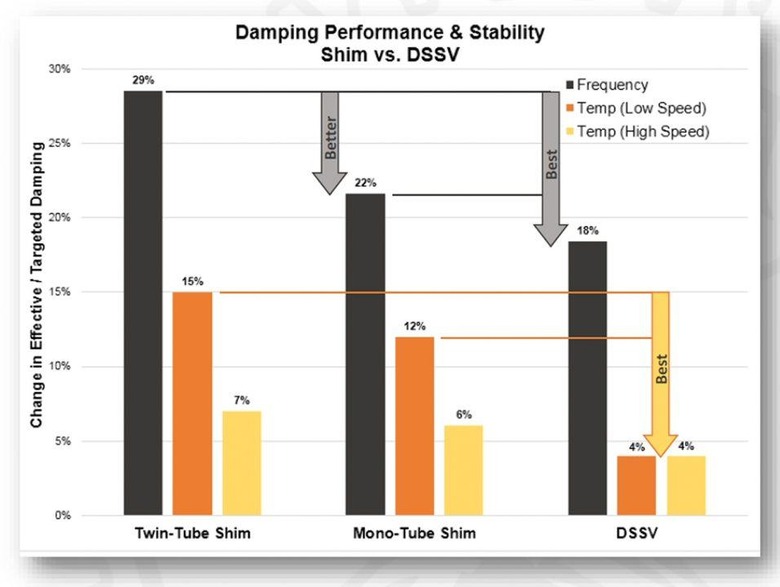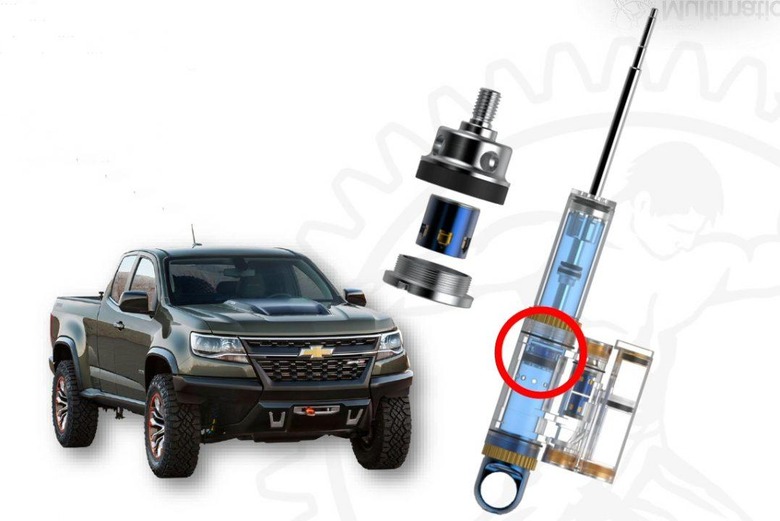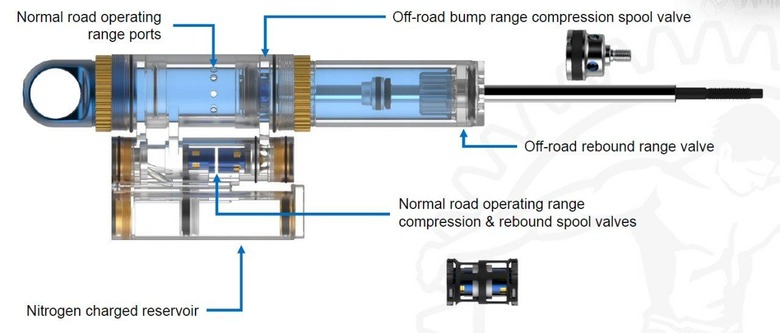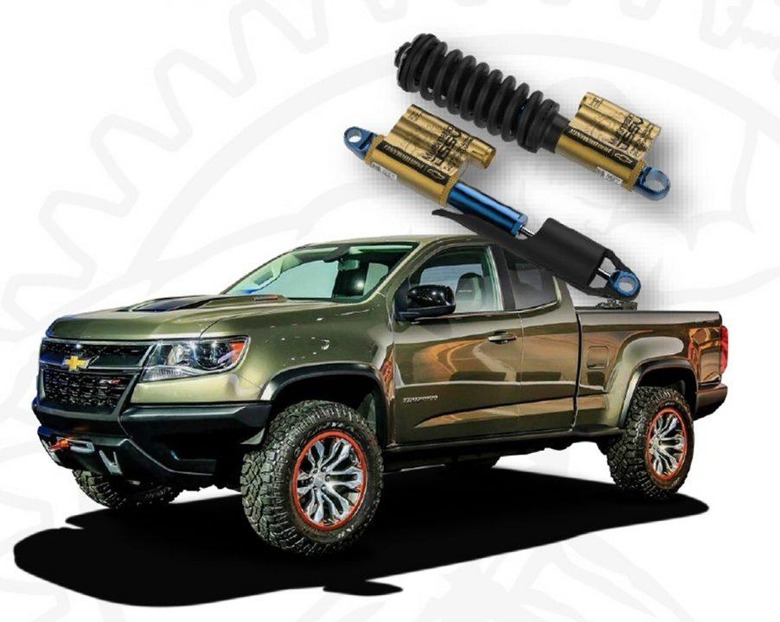2017 Chevrolet Colorado ZR2 Introduces All-New DSSV Suspension Technology
Need proof that GM is serious about its mid-size pickup program? Look no further than the Chevrolet Colorado ZR2, the first real counter-punch to Toyota's popular Tacoma TRD Off-Road truck to have been produced by the domestic brand. The Colorado ZR2, which will hit showrooms as a 2017 model, goes beyond merely butching up the suspension and adding fender flares – it actually introduces brand new technology under the chassis that has yet to see the light of day in a pickup platform.
Specifically, when it rolls into dealerships next year the Chevrolet Colorado ZR2 will be the first truck on the market to feature Multimatic-built off-road shock absorbers. You might recognize that name from the string of Formula One championships and constructor's titles that the Canadian engineering firm has enjoyed over the past several years, or from its status as the suspension supplier for supercars like the upcoming Ford GT and the Aston Martin One-77. I had the chance to sit down with the brain trust at Multimatic at the Spring Mountain Motorsports Ranch in Nevada this past month and find out more about what the ZR2 brings to the off-road argument.
All-terrain driving requires an entirely different chassis setup as compared to what works on the street, which can make it particularly challenging to design a vehicle that's competent in both worlds. In the end, most factory-built off-road trucks and SUVs end up compromising on-road handling and suspension response in favor of being able to handle the extreme loads and compressions that come with bounding from rock to dune to trail.
Enter dynamic suspension spool valve technology, or DSSV. Conceived and designed by Multimatic, DSSV is a technology that has been adapted from the world of high performance driving that moves beyond monotube / twintube shock designs and the traditional external reservoirs added to accommodate off-road driving.

Whereas standard shock absorbers make use of a set of shims to control the flow of fluid inside a shock absorber and dampen the force of the piston, DSSV employs spool valves. What's the difference? A spool valve chamber features customizable ports for controlling fluid flow, rather than relying on shim deflection, which is a far less precise method of controlling the movement inside a shock absorber. By changing the shape and the location of the ports, it's possible to tune shock response in a highly predictable manner. Even more important is how consistently DSSV tech responds, which minimizes variations in performance, keeps fluid flow from becoming turbulent, and provides no real drop off in capability even as temperatures inside the shock begin to rise.
Chevrolet and Multimatic have worked together on DSSV suspension systems before with the Chevrolet Camaro Z/28, which was the first affordably-priced street car to offer the technology. Applied to the Chevrolet Colorado ZR2, however, DSSV opens a new frontier in off-road driving that no one else – even the aftermarket – has so far attempted to conquer.

The difference, as always, is in the details. The shocks used by the Colorado ZR2 feature not one, but three spool valves. Unlike the Z28, which offered piston-mounted valves, the first two found in the are located in a remote block attached to an external reservoir, and allow Chevrolet to tune the rebound and compression of the damper. The third valve is designed for position sensitivity – that is to say, to react when the shock is undergoing extreme extension and compression – and is found inside the shock cylinder itself.

Why is this important? The remote spool valves provide exceptional control and comfort when driving on the street, while the third valve's ability to intervene when hitting the trail hard (jumping, rock crawling, bouncing through ruts) adds the extra stiffness and damping required without infringing on road manners. Contrast this against a standard external reservoir shock, which offers no such additional control, and the difference between the two is repeatable, day-long performance in harsh conditions with no squishy, disconnected feeling on the drive home.

Why not simply use the excellent Magnetic Ride Control system that's outfitted to so many high performance GM cars and trucks, and avoid the development costs of an all-new design? I asked the same question. Chevrolet's answer was that magride isn't designed to tackle the same heat and abuse that's generated during off-road driving, whereas the Multimatic solution has years of testing in some of the most toxic racing environments found all over the world.
It's a simplified explanation of a very complex technology to be sure – but the take-away is that the Chevrolet Colorado ZR2 offers truck fans something no other manufacturer is currently building. The same technology that sticks an F1 car through the corners now keeps the Colorado ZR2 from bouncing uncontrollably down a rough desert trail.
